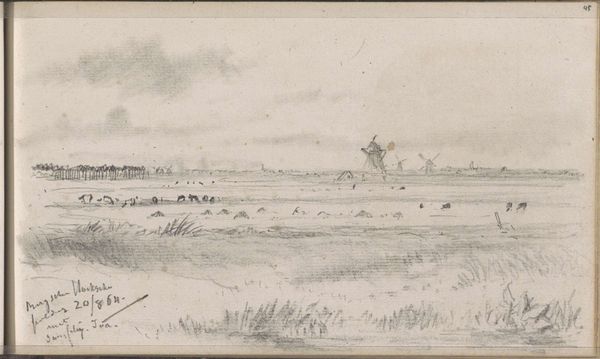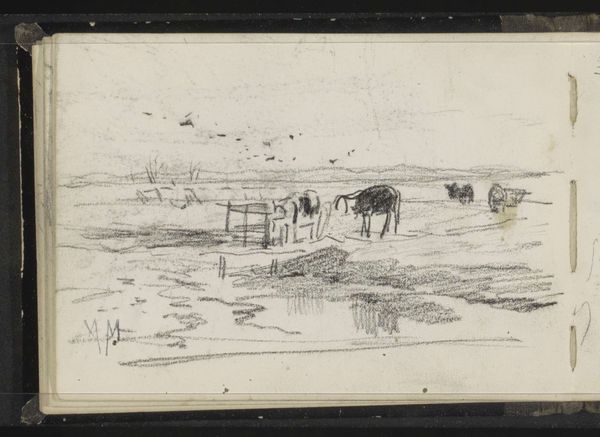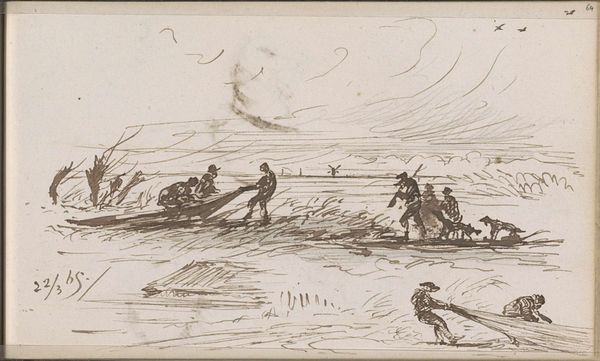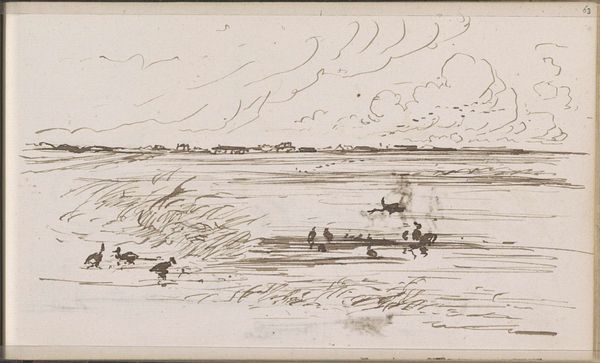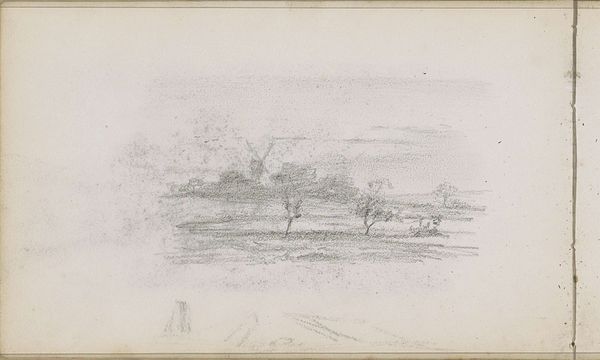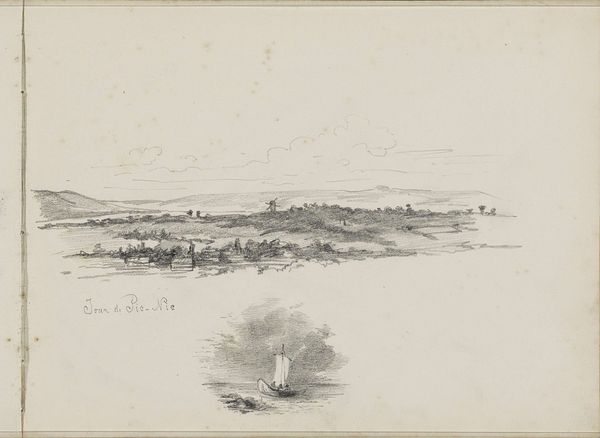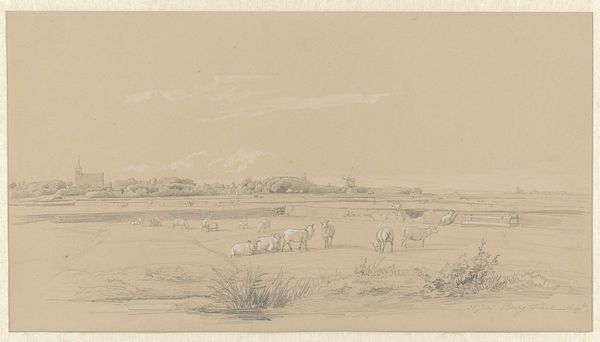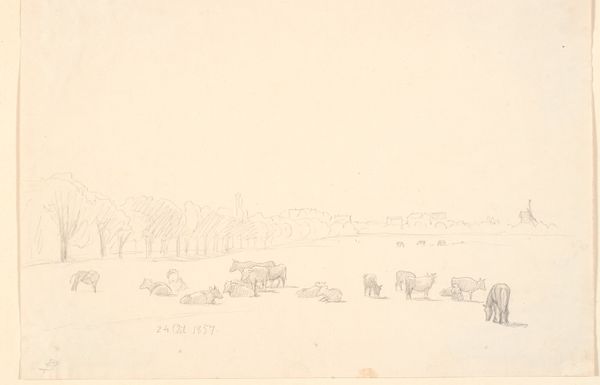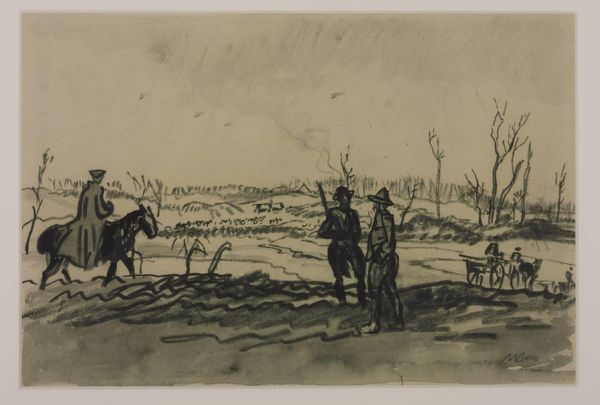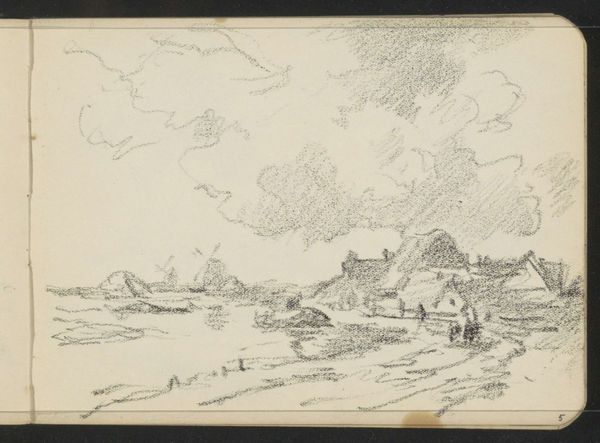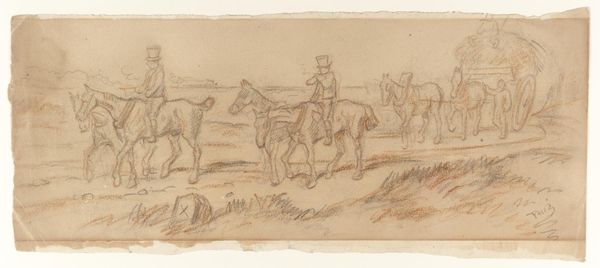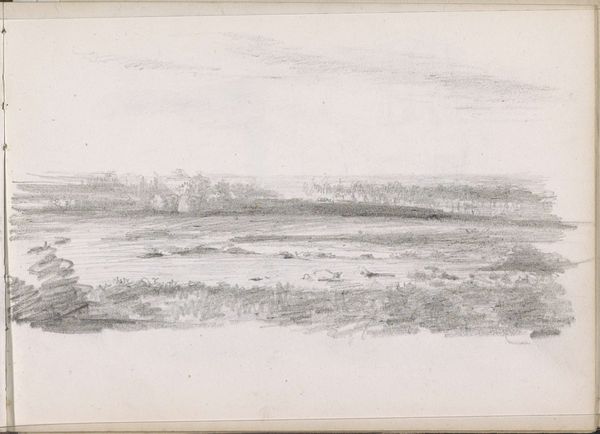
drawing, pencil, graphite
#
drawing
#
toned paper
#
pen sketch
#
landscape
#
figuration
#
pencil
#
horse
#
graphite
#
watercolor
#
realism
Copyright: Rijks Museum: Open Domain
Curator: Willem Bastiaan Tholen created this work, "Weidelandschap met grazende paarden en een man," sometime between 1870 and 1931. It's a drawing utilizing pencil, graphite, and possibly some watercolor on toned paper. Currently, it resides here at the Rijksmuseum. Editor: My first impression is one of quiet observation. It's as though the artist has captured a fleeting moment of pastoral life, seen from the perspective of the man in the scene. The lack of vivid color adds to a sense of melancholy. Curator: Indeed. The monochromatic palette, primarily graphite and pencil, focuses our attention on the form and line work. Notice how Tholen uses hatching and cross-hatching to build depth and texture, especially in the foreground. It’s almost a study in tonal variation. Editor: But what does it signify? To me, this image speaks volumes about labor, landscape, and the changing roles within rural society during the late 19th and early 20th centuries. This figure seems like he may be surveying "his" land but he is, like the grazing horses, also a resource. Are we witnessing a moment of connection with the landscape, or the dawning realization of estrangement? Curator: The relationship between the figure and the horses within the composition is certainly interesting. They are parallel to one another, united as they both exist here within this liminal landscape. And that is echoed by the perspective itself: the viewer is granted access only from a middle distance, suggesting some sort of mediating third point between viewer and landscape, making us an interlocutor of these elements, of these subjects, within it. Editor: Absolutely. It prompts reflections on ownership, access, and the social hierarchy implied by the figure's upright stance contrasting with the grazing animals. And consider how class divisions and agrarian transitions shape human experience. Does the horizon signify futurity and progression, or only an existential nothing? Curator: An astute reading. And beyond the sociopolitical dimension, the simplicity of the medium belies a sophisticated understanding of form and perspective. The loose, sketchy style conveys a sense of immediacy, as though Tholen were capturing a transient moment. Consider how light interacts with the muted colors; observe how form resolves into depth via contrast in those tonal values, which resolve at the horizon, guiding our eye, and thus binding all the discrete aesthetic elements. Editor: Which is the core paradox, right? How do these fleeting moments constitute lives which have a broader context than a single, immediate sketch? For me, it underscores the significance of such glimpses in constructing larger social narratives, demanding we look at historical inequities encoded within seemingly serene scenes of working people in everyday landscapes. Curator: A compelling perspective, highlighting the power of seemingly simple compositions to reveal complex layers of meaning. Editor: Precisely, it's a reminder that art engages not only with our sight but also our insight into broader histories.
Comments
No comments
Be the first to comment and join the conversation on the ultimate creative platform.
